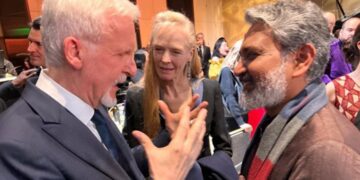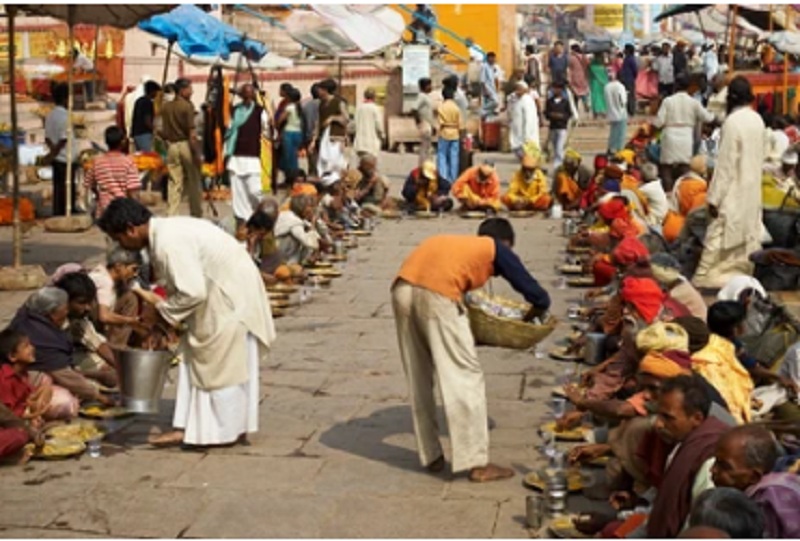By Soumyabrata Mondal and Anand Prasad Mishra
Poverty estimates have long been a political battleground in India. The recent Multidimensional Poverty Index (MPI) findings have been critiqued not just for methodological flaws but also for potentially serving political narratives.
Political critics of the government point out, “It was a report prepared by NITI Aayog (Central government’s think tank), (based on) a survey done by them and reported by them.”
To be fair, the study of multidimensional poverty was led by the NITI Aayog in collaboration with UNDP and the Oxford Poverty and Human Development Initiative (OPHI).
However, such a self-referential loop does raise questions about transparency and objectivity of India’s recent claims of a sharp reduction in multidimensional poverty.
Major gains have been reported in states long considered poverty hotspots—Uttar Pradesh, Bihar, and Madhya Pradesh. But behind these statistics lies a more complex story.
While the numbers may suggest progress, there are significant methodological and contextual concerns that cast doubt on the depth and durability of this achievement.
Evolution of poverty metrics
India’s poverty discourse has evolved from focusing solely on income or consumption to incorporating multidimensional indicators like education, health, and standard of living This shift began with the pioneering work of Amartya Sen and Mahbub ul Haq in the 1990 UNDP Human Development Report.
It later matured into the Global Multidimensional Poverty Index (MPI), developed by the Oxford Poverty and Human Development Initiative (OPHI).
While this move represents a broadening of the scope of measuring poverty, it also raises critical concerns about accuracy, representation and the over-simplification of complex realities.
Methodological concerns with MPI
The Indian version of the MPI, developed by NITI Aayog, extends the global MPI’s 10 indicators to 12, adding dimensions like maternal health and financial inclusion.However, the weighting and selection of indicators have drawn criticism from several scholars.
For instance, owning a bank account is considered an indicator of improved living standards under MPI, despite nearly universal coverage of owning bank accounts under government schemes. This can inflate the perception of progress without reflecting meaningful change in people’s lives.
Such modifications to the MPI serve to amplify the appearance of poverty reduction, especially when aligned with flagship government programs.Scholars have highlight how including indicators with high baseline access—like electricity or bank accounts—can distort the index, creating an over-optimistic narrative.
Similarly, indicators like “asset ownership” combine vastly different items—from radios to refrigerators—without accounting for their varying relevance or economic weight.
Others have criticised the MPI’s arbitrary deprivation cut-off and the omission of critical age-specific nutritional data, especially for children aged 6–14, who are particularly vulnerable.
Moreover, the MPI conflates inputs (like the provision of sanitation facilities, which contribute to reducing poverty) with outcomes (like child mortality, which goes down with poverty alleviation).
Nutrition indicators show similar issues—while the MPI suggests improvements, anaemia among women and children has worsened between National Family Health Survey (NFHS-4) and NFHS-5, and the 810 million people receiving food subsidies under the Public Distribution System remain underrepresented in MPI estimates.
Pandemic realities missing
The time-frame for the current MPI estimates includes the early pandemic years, yet more than 70 percent of the data comes from before COVID-19.
As such, the MPI likely fails to reflect the pandemic’s devastating impact on health, education, and livelihoods. This limitation is acknowledged, yet the report still makes strong claims about progress during this period.
The pandemic led to severe disruptions in education, health services, and employment—particularly among informal workers, who constitute over 90 percent of India’s workforce. School closures affected over 200 million children, and learning loss has been widely reported by surveys such as Annual Status of Education Report (ASER). In this context, gains in MPI education indicators may not represent actual improvements in human development.
Moreover, fiscal constraints during the pandemic—India’s stimulus package amounted to only about three percent of GDP—curbed the state’s capacity to cushion vulnerable populations. Public health expenditure remains below 1.5 percent of GDP, and the education budget has shrunk to under three percent.
Given these realities, projections based on pre-pandemic trends should be treated with caution.
Disputed estimates
The absence of recent, reliable consumption expenditure data further weakens the poverty discourse. The lack of updated census data, alongside methodological inconsistencies and limited transparency in the implementation of revised consumption surveys, has further eroded the credibility and utility of poverty statistics.
The 2017-18 survey, which reportedly showed a decline in consumption among the poor, was never released. This gap is crucial because consumption data provides a direct link to people’s real purchasing power and living standards.Economists have noted that in a country like India with a large informal economy and significant self-employment, national accounts need to be cross-verified with household-level data to ensure credibility.
Relying solely on MPI without the parallel support of consumption-based indicators can distort the policymaking landscape.
Integrated metrics needed
The MPI can offer a broader understanding of poverty, but it cannot replace consumption expenditure data.
The two approaches are complementary. While MPI captures structural and multidimensional deprivations, consumption data reflects immediate economic realities and distributional outcomes of growth.
A multidimensional approach should not be reduced to a convenient narrative tool but must be grounded in comprehensive, high-quality data.
The proposed synergy between both metrics offers the most accurate picture of poverty and helps determine whether India’s recovery is “V-shaped” (equal) or “K-shaped” (divergent, benefiting only some).
Recent research shows that India has made real gains in reducing the intensity of poverty among the poor.
However, the number of poor has not declined proportionally, and gains are often skewed toward those who are relatively better off within the poor population. This distinction is often lost in celebratory headlines.
Need for data-driven governance
Government programmes such as Poshan Abhiyan, PM Garib Kalyan Anna Yojana, and Jal Jeevan Mission have made important contributions to poverty reduction. Yet, their impact must be rigorously assessed through robust and current data. For instance, the PM-POSHAN scheme now accounts for just 0.26 percent of the budget—its lowest in nearly a decade—raising concerns about sustained support.
Similarly, the Public Distribution System still operates based on Census 2011 figures, which do not reflect current demographic realities. Until India conducts its long-delayed Census, and revives detailed consumption surveys, its poverty assessments will remain incomplete.
Way forward
To make poverty statistics more credible and policy-relevant, India must prioritise the following:
- Revive the Data Ecosystem: Conduct the decadal Census, release up-to-date consumption expenditure surveys, and ensure that NFHS data reflects current realities.
- Combine MPI and Consumption Measures: Use both to capture structural and immediate aspects of poverty.
- Invest in Social Infrastructure: Allocate sustained resources to public education, healthcare, and social safety nets.
- Focus on Learning Outcomes: Go beyond enrolment numbers and track actual educational achievement through tools like ASER.
- Adapt to New Realities: Include emerging dimensions such as digital access, climate resilience, and social inclusion in future poverty metrics.
India’s poverty story is far from over. While recent figures suggest progress, they also mask critical gaps in methodology, data collection and lived experiences.
Policymakers, researchers, and civil society must resist the temptation of easy optimism and instead embrace a comprehensive, data-driven approach that reflects the full spectrum of deprivation.
Only then can India claim not just to have reduced poverty on paper, but to have transformed lives on the ground.
Dr. Soumyabrata Mondal is Research Associate, Department of Economics, Banaras Hindu University. Dr. Anand Prasad Mishra is Retired Professor, Department of Geography, Banaras Hindu University.
Originally published under Creative Commons by 360info™.















